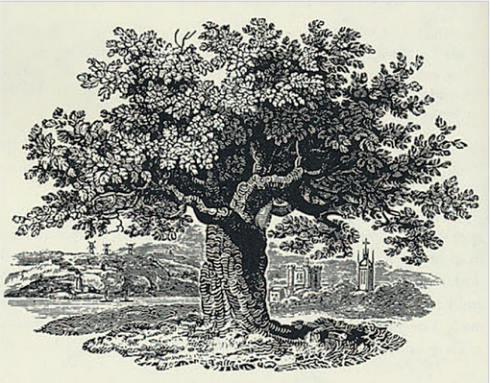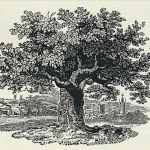Given that the Stockton Inn is now for sale, and a radical proposal for development of the site has been offered by the seller, I thought it would be appropriate to publish this article by Mr. Bush about a previous “improvement” to the Borough that took place not far from the Inn.
flora and fauna
A Cricket for a Christmas Guest
Egbert T. Bush wrote this charming piece at the end of 1931. It seemed like a nice addition to this year’s posts. Besides his visitor, he also took note of some unseasonable weather for the end of December. His conclusion was that it was just Mother Nature’s pendulum swinging one way, then another. This was probably true back in 1874 and 1889. Not so much today. However, his final thoughts do provide some solace during these disturbing times.
A “Paradise Lost” for Fruit
I recently came across a very moving obituary for Egbert T. Bush, written by Frank Burd, probably sometime in the 1970s. Burd had known Mr. Bush since his youth and was a relative of his. He informs us that Mr. Bush had always had an interest in fruit culture, especially fruit trees, which he pursued more deliberately once he acquired his farm in Sandy Ridge, which he bought from Wesley Rockafellow in 1892.
Ellicott’s Diary, Local News
Recently I wrote about the diary of Benjamin H. Ellicott, a Baltimore man who married into a Hunterdon family, and traveled with his family from Baltimore to Flemington in 1861.1
“California” in Franklin Township
Indians Thought Lightning Would Not Strike A Beech
Writer Has Never Found a Beech Tree That Had Been Struck
Other Facts and Queries
by Egbert T. Bush, Stockton, NJ
published in the Hunterdon Co. Democrat, December 11, 1930
 This article, with which I end the year 2014, can be seen as a follow up to Bush’s article previously published here called “Gathering Nuts Was Once an Industry.” There is nothing in the way of genealogy in this article, but it is full of the usual Bush charm.
This article, with which I end the year 2014, can be seen as a follow up to Bush’s article previously published here called “Gathering Nuts Was Once an Industry.” There is nothing in the way of genealogy in this article, but it is full of the usual Bush charm.
Gathering Nuts Was Once An Industry
A Boy Could Make From 30 to 40 cents a Day by Hard Work
Pegg Family Conserved Acres
by Egbert T. Bush, Stockton, N.J.
published by the Hunterdon Co. Democrat, November 21, 1929
This is another in a series of articles by Egbert T. Bush Paying attention to the wonderful trees of old Hunterdon County. A complete list of Bush’s tree articles can be found at the end.
Biggest Log Ever Brought to Stockton
Giant Oak Caused Trouble Before It Arrived at the Mill.
A Big Event in the Town
by Egbert T. Bush, Stockton, N.J.
published in the Hunterdon Co. Democrat, September 5, 1929

This is another in a series of articles by Egbert T. Bush on the subject of Hunterdon County trees. Whenever Mr. Bush writes about an event, there is always an interesting back story—often more than one. This article about Stockton takes us north to Kingwood and Alexandria, and south to Lambertville. There are a few people of particular importance: John Finney, William V. Case, Edward P. Conkling and his father Rev. Cornelius S. Conkling. The biographies of Finney and Case can be found at the end of Mr. Bush’s article. The Conklings will appear in a subsequent post.
Old Sentinel Oak Has Passed
Trees were a subject dear to Mr. Bush’s heart. This article is just one of many in which he waxed both poetic and nostalgic about the grand old trees of his neighborhood.
Included in this article is some early history of the area of Stockton where Route 523, Old Prallsville Road, Ferry Street and Route 29 (Risler Street) all come together. Rather than interrupt Mr. Bush with a long parentheses, I will save my comments for the end of his article.
“That Big Willow and Other Trees”
A Chestnut That Acted As Host to a Younger Tree
– Biggest Oak of Them All
by Egbert T. Bush, Stockton, N.J.
published in the Hunterdon County Democrat, January 1, 1931
This month is a big allergy month for me, so I looked up what Mr. Bush had to say about trees. Turns out—quite a lot. Bush had a great affection for the grand old trees that had survived the previous century, and frequently mentioned them in his articles. Now that our trees are leafing out, it seems appropriate to publish this essay. The willow described here once stood in front of Roger Byrom’s house in Headquarters.
